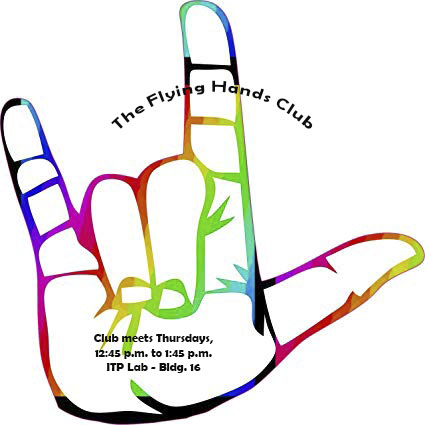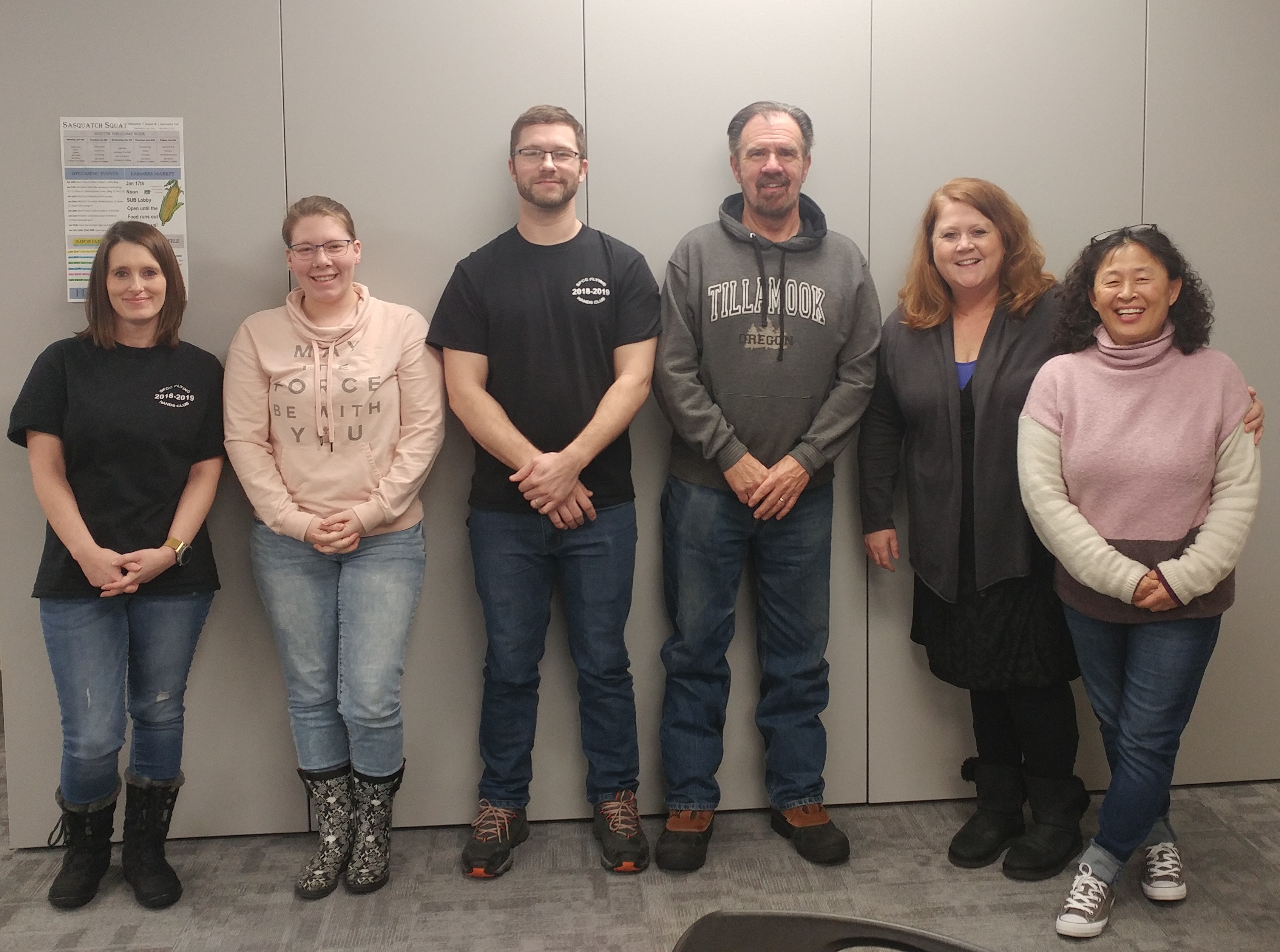No one knows just where American Sign Language got its start, but it is suggested that ASL has been around for more than 200 years and has been promoted by deaf culture.
In spoken language, words are produced by using the mouth and voice to make sounds. For those who are deaf, particularly those who are profoundly deaf, the sounds of speech are often not able to be heard and only a fraction of speech sounds can be seen on the lips.
SFCC has its own deaf culture, The Flying Hands Club. The club, which originated around 1994, has two advisors: Melissa Pilant and Angie O’Bleness.
Melissa Pilant, who is deaf, is an instructor for the interpreter training program (ITP), has been an adviser for six years.
“Students chose the name ‘Flying Hands’ by just talking amongst themselves,” signed Pilant, while Ouimet interpreted. “It’s a cool title.”
Angie O’Bleness, who graduated from the ASL program in 1991 and is also an instructor for the interpreter training program, has been an adviser for four years.
“The Flying Hands Club meets every Thursday from 12:45 to 1:45 p.m. in the ITP lab in building 16,” O’Bleness said. “The first and third weeks of the month we conduct parliamentary (business) meetings, and the second and fourth weeks of the month we hold a short business meeting first, then play sign language games.”
Sign language is based on the idea that vision is the most useful tool a deaf person has to communicate and to receive information.
ASL is a language completely separate and distinct from the English language. It contains all the fundamental features of language; it has its own rules for pronunciation, word order, and a complex gram- mar according to O’Bleness.
“The meetings are most often conducted in complete silence while students practice their sign language skills,” O’Bleness said. “If new students are in attendance, voice interpretation will be provided when necessary. When you force yourself to be silent, you learn a lot just by observing.”
O’Bleness said the weekly meetings are smaller and more intimate, as they are usually attended by students who are more serious about learning the language.
Kyle Ouimet, who has been a member of the club since fall quarter, joined to become more involved and to better learn signing skills through socializing.
“It is not necessary to be in a sign language class to participate in The Flying Hands Club,” Ouimet said, “but rather it is encouraged. Come and learn. Challenge yourself to get out of your comfort zone.”
Ouimet said it takes time to become fluent in ASL.
“If you are looking for an interesting new challenge, something that is not common among most hearing culture, the club is a great place to learn cool, new skills and become involved,” Ouimet said.
Ouimet’s oldest son is deaf.
“He is the reason I came to SFCC and joined the program,” Ouimet said. “I have been learning for the past five years.”
Tara Pruett, vice-president of The Flying Hands Club, is fairly fluent in sign language.
“I have two children who are both deaf and both sign and use cochlear implants,” Pruett said. “I learned about the club last school year when a student in my class asked me to come. She asked me several times before I finally came.”
Emily Greenfield, secretary of the Flying Hands Club, joined the club because a friend in her ASL121 class asked her to.
“I have learned more sign than I had previously learned,” Greenfield said, “and the exposure in a formal setting was good for me.”
“I have a friend named Thomas who is deaf, fully deaf.” Greenfield said. “I used to work with him at Walmart. Sign language has helped me communicate with him better and has helped me with other workers and shoppers.”
The club welcomes people who want to come and learn sign language.
“We also do a lot of community events,” O’Bleness said, “and invite more deaf people to come to those events,” which has included bowling, performances, picnics and a winter party.
“We have roughly 160 students who have participated in club performances,” O’Bleness said. “Deaf culture is highly narrative, so our events consist of students signing songs, reading poetry, telling jokes, reading an ASL-ABC story, or reading an ABC-123 story.”
Storytime is one of the community events held monthly by the club.
“Every month we do Barnes and Noble storytime for children, and this is one of the ways students develop their skills,” Pilant signed, while Ouimet interpreted.
“Deaf children can come watch the story,” O’Bleness. “It really unites us as a community.”
To learn more…
The Flying Hands Club’s will hold a signing event in the SUB Lounge on Thursday, Feb. 14, from 11:30 a.m. to 1:00 p.m. Please plan to attend.
If you are interested in joining The Flying Hands Club, plan to attend a meeting. Meetings are held every Thursday from 12:45 to 1:45 p.m. in the ITP lab in building 16
For more information about deaf culture, visit
Tara, left to right, Emily, Kyle, Ken, Angie and Melissa are members of the SFCC Flying Hands Clubs.
Courtesy photo

